When I was researching for a trip to Chiang Mai in northern Thailand, a visit to an elephant camp always seem to come in every material (mostly blog articles and travel websites) I read. Its not just in Chiang Mai, it seems that when you visiting Thailand, your trip will not be complete without some form of interaction with an elephant.
I did not want my "elephant interaction" to be limited to buying an elephant key chain, so I thought OK lets pick one camp then. But which one? And what type of interaction. That's when it got quite complicated.
one of elephant camps in Mae Taeng
There's a lot to choose from: from highly established camps with dozens of elephants (like Maesa Elephant Camp) to family-owned ones with just a couple of elephants (Patara Elephant Farm). The interaction ranges from being downright touristy [no clear definition what constitutes this as there has been no international convention on touristy-ness] to intimate encounters. Then there's the ethical issue!
Whether its touristy or not, it depends on what your preferences are. There are elephants who paints, play football or some musical instruments, and other circus tricks. I did not want to see these, as these are unnatural behaviours. Plus they said these elephants go through some nasty "training" to acquire these abilities [opps, ethical alert!]. No, I am trying to play the ethical card, but these are lumbering giants who walk with a sure-footed gait and I to experience riding one - not on a trekking chair but on the neck [but even this style of riding is deemed unethical by some!]
To ride or not to ride
Not on a trekking chair nor even on the neck. These are wild animals that are meant to roam free, so said one group. Elephant Nature Park caters specifically to this group, with the interaction limited to feeding and bathing the elephant. The park and its owner Lek has been featured in NatGeo and BBC.Any elephant that can be ridden had to be broken - a painful process called phajaan. However some would argue that while this practice was probably prevalent in the past when most elephants are "collected" from the wild, a lot of elephants nowadays are born in captivity and needs minimal training to be ridden [circus tricks on the other hand is another story].
A wide open space camp is ideal, that I have to agree. But reality struck in when I saw some of the camps in Mae Taeng. Not everyone has acres of land and some of the camps are literally by the side of the road. Most of the elephants are probably better off here than on their own. But feeding a herd and making sure they are healthy costs a lot. Camps need to make money, one way or another.
jungle trek
It would be naive to think that elephant riding was invented just recently for the enjoyment of tourists as its part of various cultures (Thai, Burmese, Indian, etc) for centuries. Even Thai Elephant Conservation Center (Thailand's only government owned elephant camp) has something to say about what the West thinks of elephant riding in Thailand.
Mahout - the elephant rider
mahoutA lot of camps offer a mahout program ranging from a few hours to multi-day interactions. Camps like Baan Chang Elephant Park and Jumbo Elephant Camp are sort of the "middle ground" - none of the circus stuff but offers elephant interaction mahout-style. This means you can ride on the neck and you get to see how it is to be mahout even for just a day.
But even this is not prone to ethical issues, especially on the use of chains and bullhooks. Baan Chang even made sure you are aware of these practices before you visit their camps.
chained for protection
What I think of the chains and menacing bullhooks? Chains I think are a practical solution to keeping the elephants. The photo above would probably make some people hyperventilate but come to think of it, we do keep our dogs on a leash, right?
And if you think you can keep the elephants using some abaca ropes, you have another thing coming. No ropes and chains? Remember these camps are near people's homes, and letting the elephants roam free would be a dangerous proposition. The camp owner will have a heck of a day explaining what happened to a farmer whose crops have been trampled or snacked on by the elephants. I could imagine much worse scenarios.
After for the bullhooks, these is what one mahout has to say:
Bullhooks, chains, neck-riding, trekking chairs, etc - these stuff are not black and white and you could spend an whole lot of time arguing what is proper and right, and what is not. Each one has its own merits and bad points as well.
Each of these camps in Chiang Mai claims to take good care of their elephants. I tend to believe them, as its in their best interest to do so.
Thai Elephant Home
We ended trying the mahout program of Thai Elephant Home. They have 15 elephants and a variety of programs to suit your time availability, and guarantees 1 elephant per person.mahout explaining the commands
The day started with some basic orientation and a few command words (which we actually used!). You'll be taught how to mount your elephant properly.
forest trail
Our elephants were Roombit, a playful 12 year old female, and Boomnam, a large 45-year old matriarch who likes to stop every few meters and eat.
Here's a video snippet (I'm riding Boomnam):
with mahouts Lee (walking) and Ou (Boomnam, 2nd elephant)
Best part of the experience? Definitely the river bath.
Roombit enjoying a river splash
serious Boomnam
Baby Bonus
Most elephant camps breeding programs and nurseries, larger ones like Thai Elephant Conservation Center have elephant hospitals.We saw a mom and baby pair (Metboon - 25 years old and Taaro - 7 days old) , in Thai Elephant Home during our visit. The mahouts highlighted the importance of calves not being separated from their mom during the critical years before weaning.

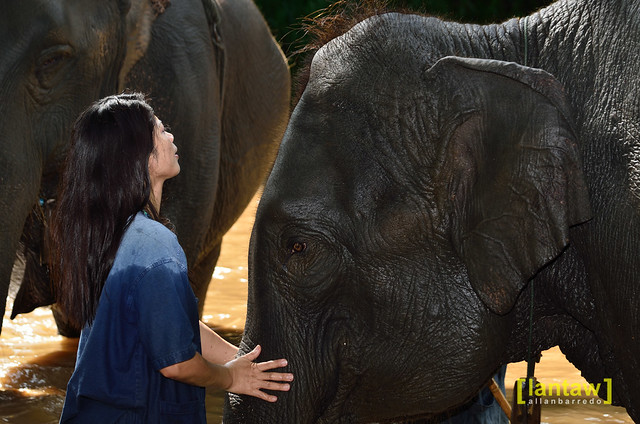
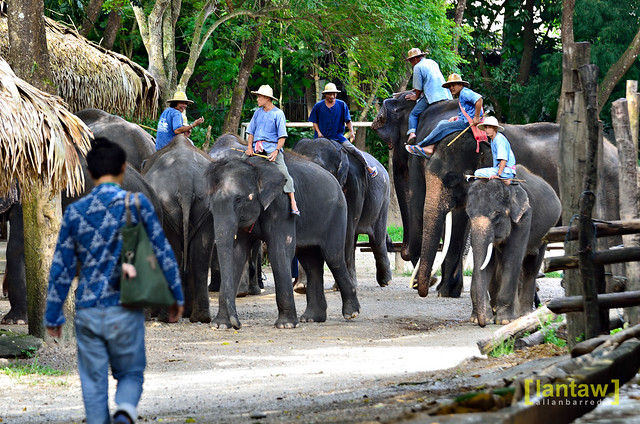
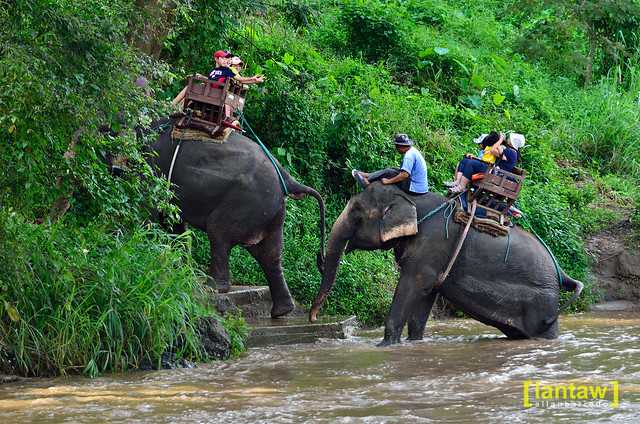
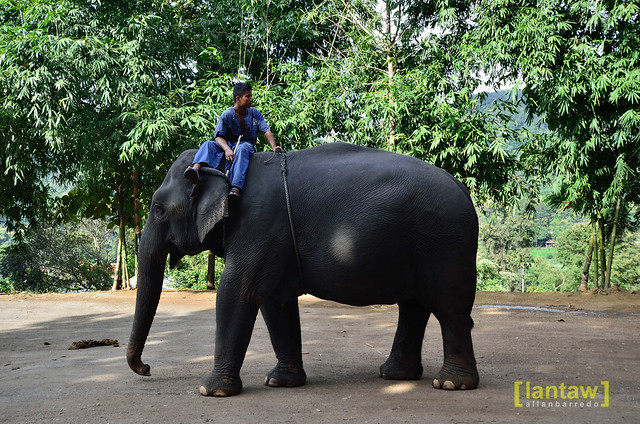
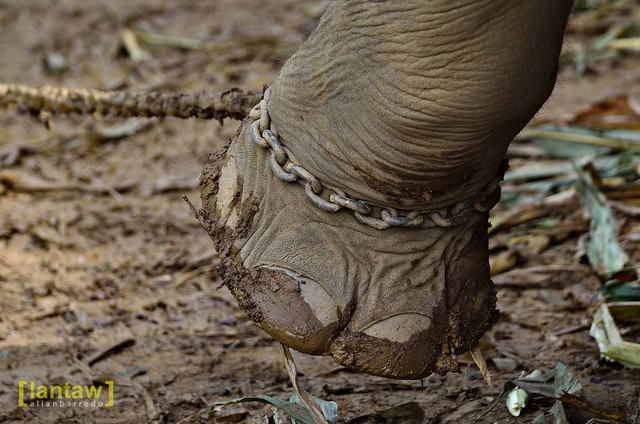
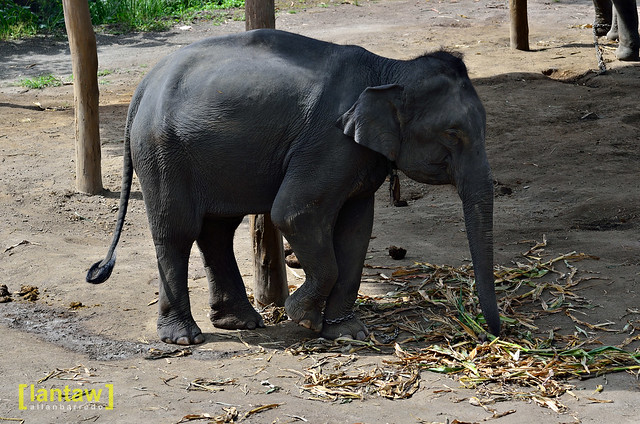
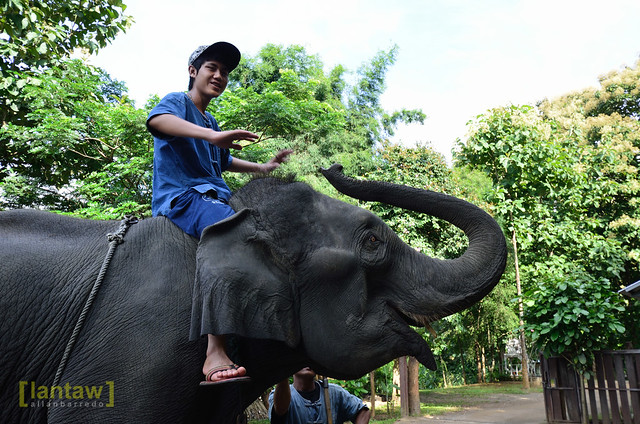
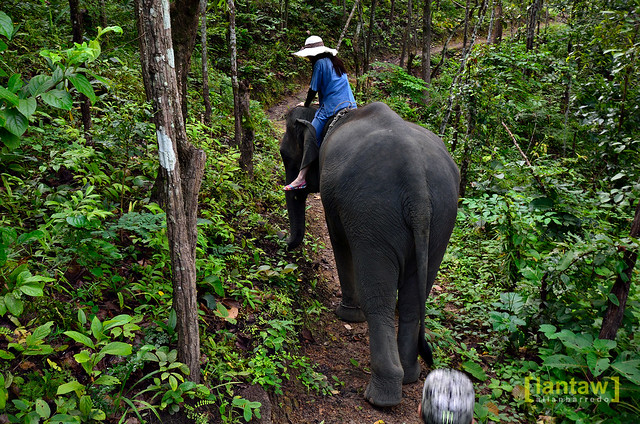
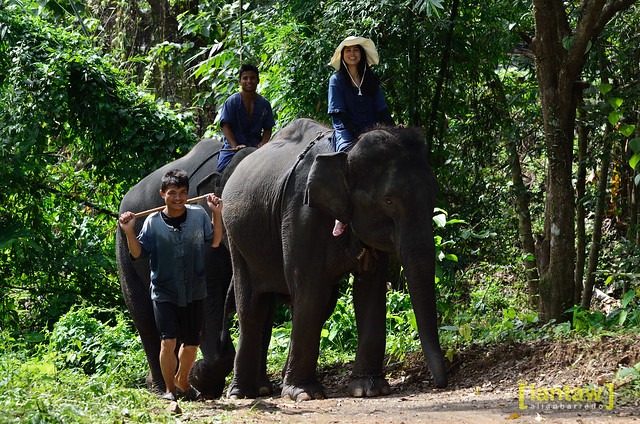
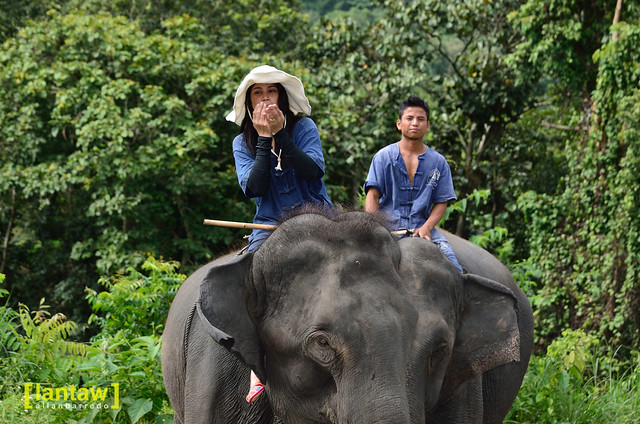
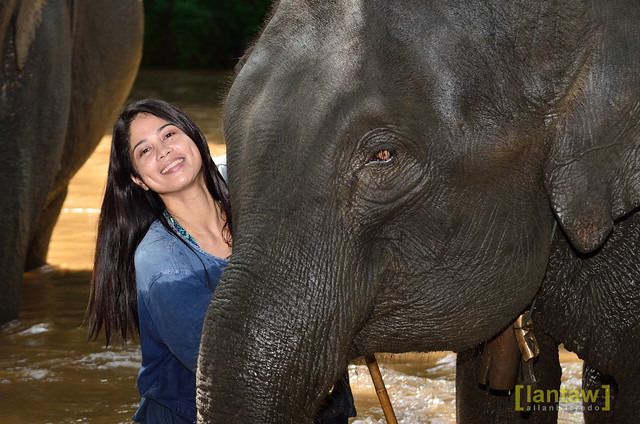
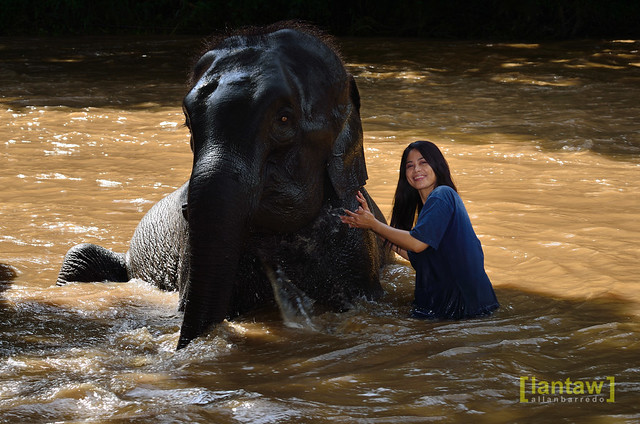

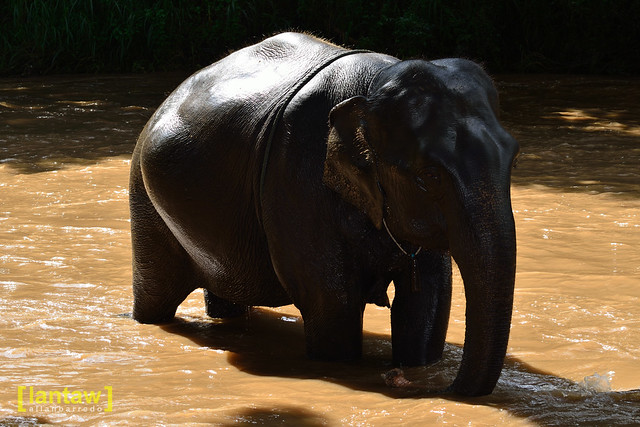
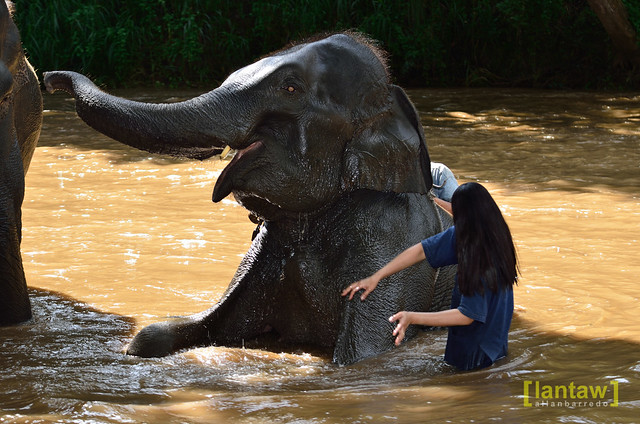

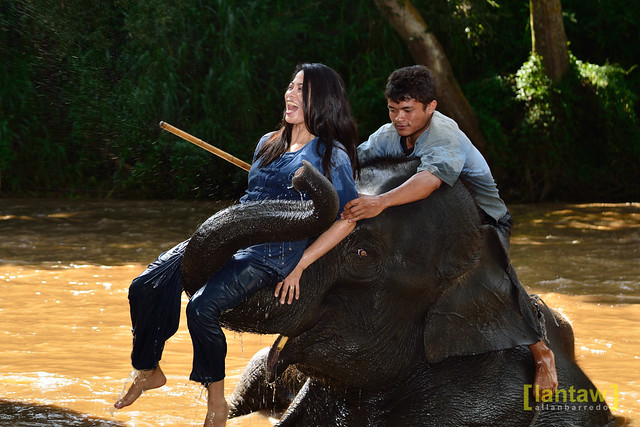

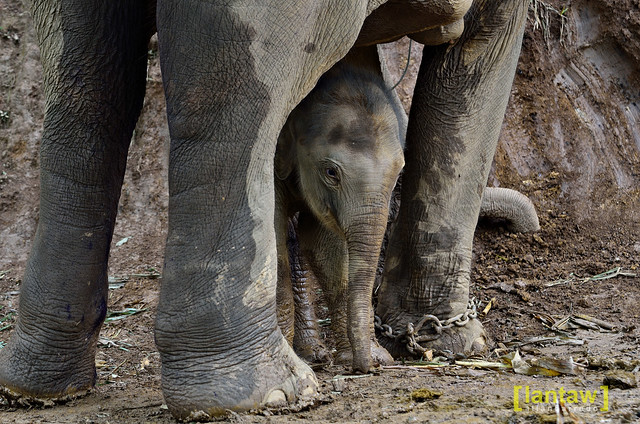
1 comment:
Very nice blog & nice photo.
Thank you very much for your sharing!!
Post a Comment